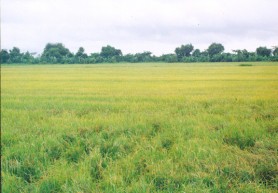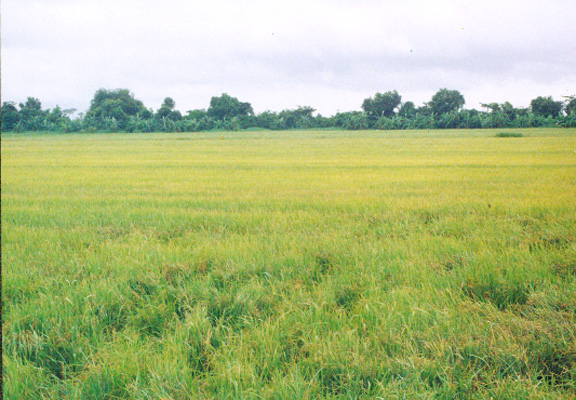Faced with a decline in commercial bank loans to the agriculture sector, the Agricul-ture Ministry is developing a “market-based area-yield index insurance scheme” for the rice sector.
In a brief, the Ministry says that if the scheme is successful, it “would transfer exogenous agricultural risks to a third party and thus effectively solve the conundrum surrounding the predictability of cash flows into the agricultural sector.”
Government is seeking assistance from the World Bank to reduce the reluctance of the commercial bank lending to the agricultural sector by undertaking a number of initiatives to reduce some traditional risks associated with investment. In this regard, the insurance scheme is a key initiative among the measures being contemplated.
The Ministry has noted a “declining” trend in commercial bank lending towards small enterprises in the agricultural sector, while micro-financing institutions like the Institute for Private Enterprise Development (IPED) and the Small Business Develop-ment Finance Trust (SBDT) step in to play a significant role in filling the “access to finance gap” that exists in rural enterprises.”

While noting that in 2009 commercial bank credit for agriculture increased by 29.3% from the $3.9bn loaned in 2008, the Ministry of Agriculture says that lending to the sector from commercial banks is not only low, it has been declining. By contrast, it notes that agriculture constitutes 41% and 46%, respectively of the respective loan portfolios of IPED and (SBDF) with the former lending $1,746m to the sector and the latter, $214m during last year. The Ministry states that administrative costs per loan averaged $43,960.00 in the case of IPED and $24,382.00 in the case of SBDF. It adds that interest rates charged by the two institutions “hover around 30% for a typical six-month loan” which, it notes, is significantly higher than the current annual prime lending rate of 14.5% prevailing in the commercial banking sector.
In seeking to explain the low transformation of commercial bank savings into private credit, the Ministry cites “a lack of credit rating systems; bankable business plans and financial statements; collateral requirements and collateral collection, adequately trained staff and the urban location of banks.” Additionally, it says “bad experiences in the past, particularly a large wave of default in the 90’s on behalf of agricultural enterprises” are also contributory factors to the current cautious posture of commercial banks towards lending to the agricultural sector.
Setting aside what the Agriculture Ministry says has been a decline in commercial bank lending to the sector, it notes that even less attention is paid to the borrowing needs of smaller farmers, who “form the backbone of the agriculture sector in Guyana.”
Meanwhile, the briefing paper cites various schemes currently being administered by the Ministry of Agriculture, which it says seeks to tackle both the supply and demand side constraints in the agriculture sector. Numbered among those schemes are the US$1m Rural Enterprise and Agricultural Development (READ) Programme, comprising a Credit Fund (CRF) and an Enterprise Development Grant Fund (EDGF) that seek to facilitate the development of enterprises and the successful marketing of products. The CRF will finance working capital loans to project beneficiaries’ businesses while the EDGF will offer grants to project beneficiaries for investments in rural enterprises, based on comprehensive business plans that address marketing and technological, financial and management issues.
Under the Agricultural Export Diversification Pro-gramme (ADP), government has allocated $US2m for the preparation of agribusiness plans to support the development of value chains in the fruit, vegetable, aquaculture and livestock sectors.
Meanwhile, the Agriculture Ministry says that it is developing a business skills curriculum for farmers which will, it says, “comprise the wide array of financial and business skills that a modern day farmer needs, including the preparation of business plans, estimating the cost of production, profit and loss, cash flow budgeting……..which will allow farmers to present a more robust case to financial institutions.”

